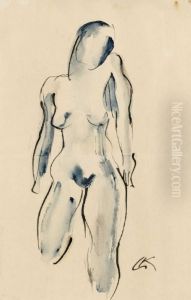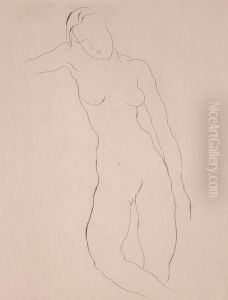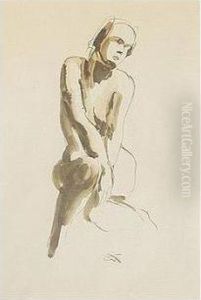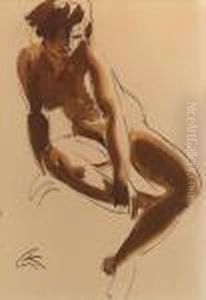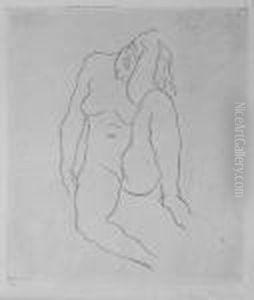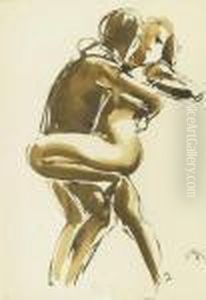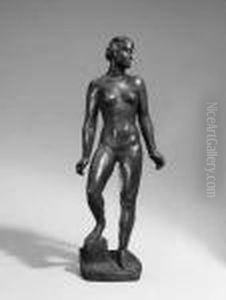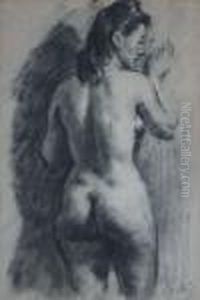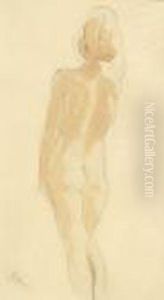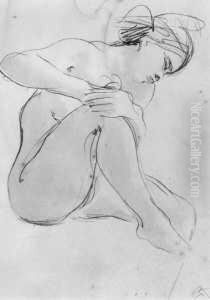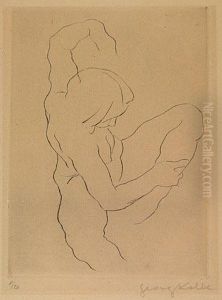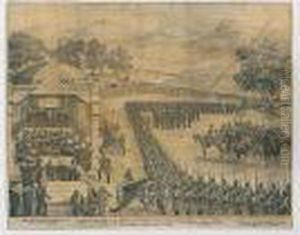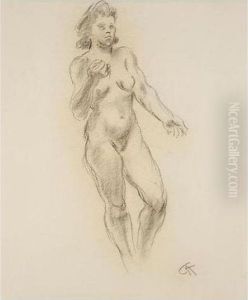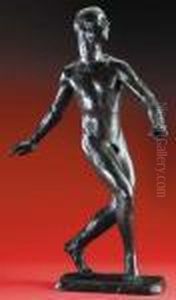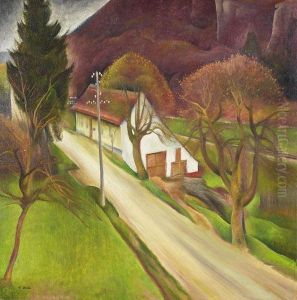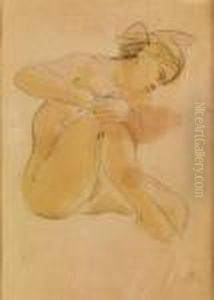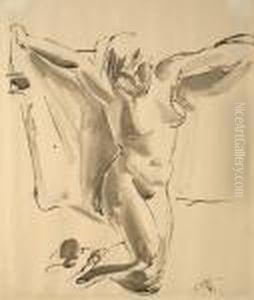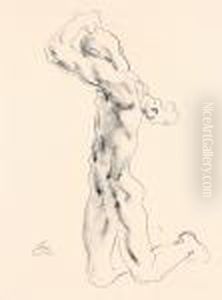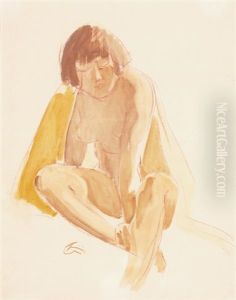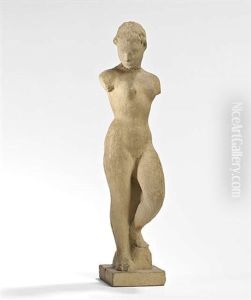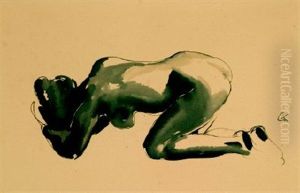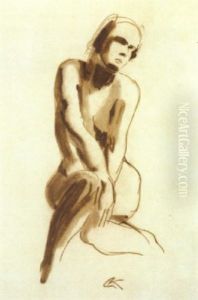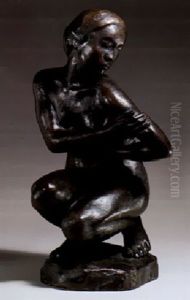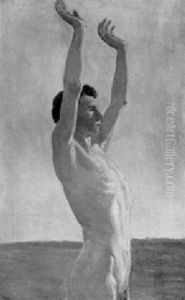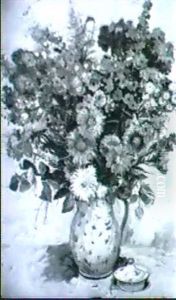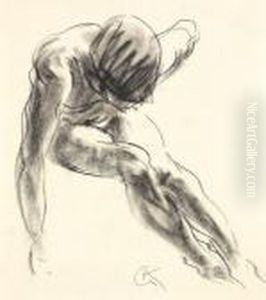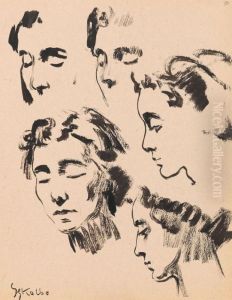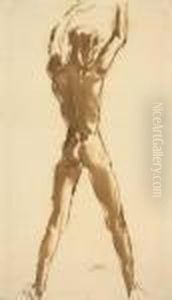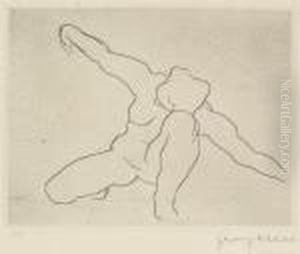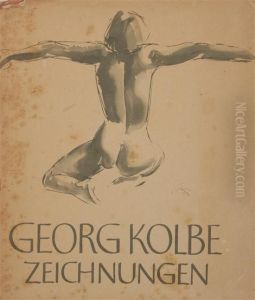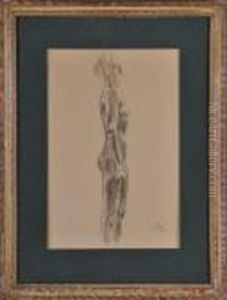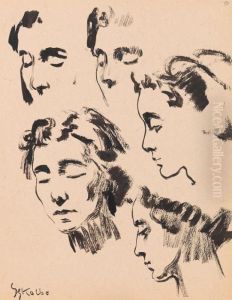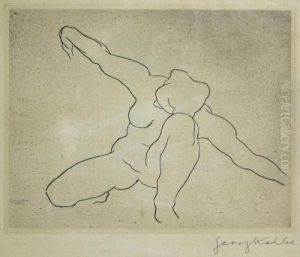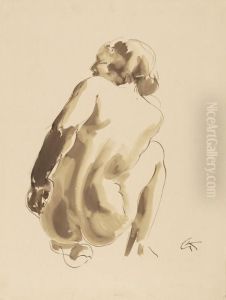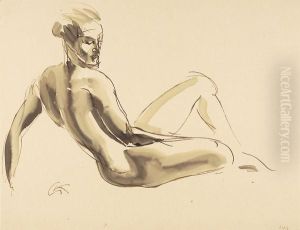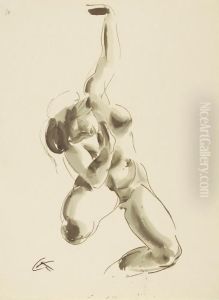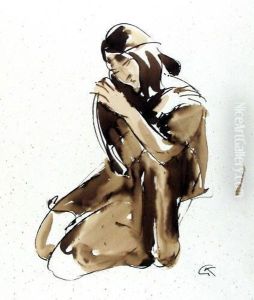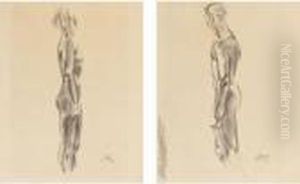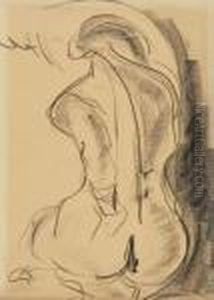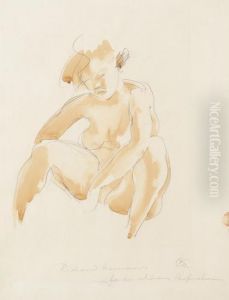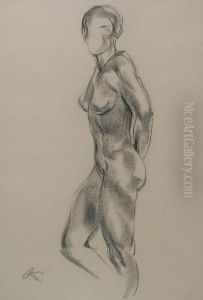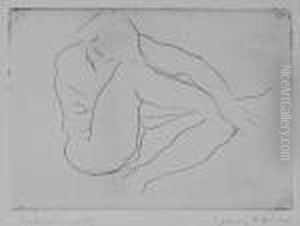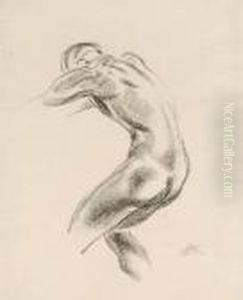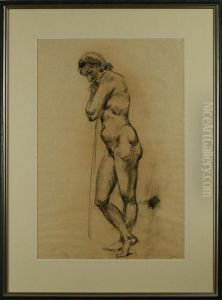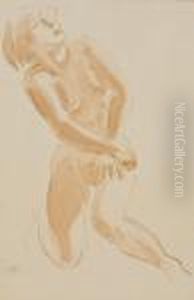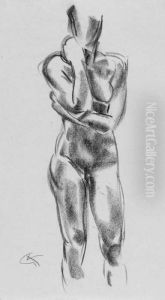Georg Kolbe Paintings
Georg Kolbe was a German sculptor who is remembered for his dynamic expression of the human form in early 20th-century art. Born on April 15, 1877, in Waldheim, Saxony, he initially trained to become a painter before shifting his focus to sculpture. Kolbe studied at the Dresden Academy of Fine Arts and later in Paris and Rome, where he was influenced by the works of Rodin and became deeply interested in the human body as a subject for sculpture.
Kolbe's work, characterized by a blend of naturalism and modernist stylization, gained recognition in the 1910s and 1920s. He often depicted figures in movement, emphasizing muscular tension and emotional expressiveness. One of his most famous works, 'The Dancer,' showcases this dynamic approach to form and has been celebrated for its life-like vitality and sense of motion.
During the 1920s and 1930s, Kolbe's reputation grew, and his sculptures became popular in public spaces and as part of architectural projects in Germany. Despite the changing political climate with the rise of the Nazi regime, Kolbe managed to maintain a degree of artistic independence, though some of his works were deemed to align with the regime's aesthetics, which later led to a controversial assessment of his legacy.
After World War II, Kolbe's health deteriorated, and he passed away on November 20, 1947, in Berlin. Today, his works are displayed in numerous museums and collections around the world, and his contribution to modern sculpture and the expression of the human form continues to be recognized by art historians and enthusiasts.
